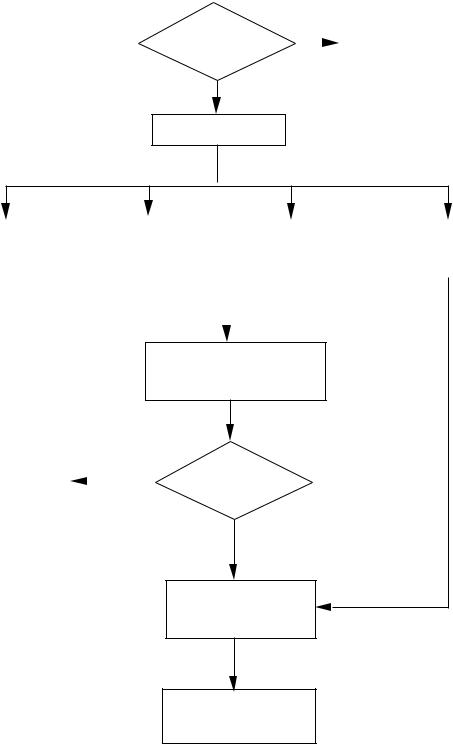Pioneer XRP-440 Service manual

No.: SK49006
Date: JAN,25, 1995
SERVICE KNOWHOW
XR-P740M,740,640M,640,440M,440 340M,340
XR-J25M,22M,22,15M,11M,11 SX-J320,420,520,720 RX-P840,570,570S,J33,370 M-770
THE CIRCUIT OPERATION OF THE POWER AMP MODULE
Fig-1&2: THE BLOCK DIAGRAM OF POWER MODULE PROTECTION CIRCUIT
Page-1 : 1.THE PRECAUTION IN REPAIRING A SET
Page-2 |
: THE BLOCK |
DIAGRAM OF THE PROTECTION CIRCUIT |
|
Page-3 |
: 2.THE CIRCUIT OPERATION OF |
THE DETECTORS |
|
|
3.THE OPERATION OF THE FAN |
MOTOR |
|
Page-4 |
: 4.TROUBLE |
SHOOTING |
|
Page-6 |
: 5.HOW TO CHECK THE DETECTION CIRCUIT |
||
1. PRECAUTION IN REPAIRING A SET
a. A heat sink for the power transistors should be isolated from the ground.
A collector of the transistor is directly connected to the heat sink.
b.A heat sink should be firmly installed onto the power transistors when checking the circuit, otherwise the transistor will get damaged or burn out due to thermal runaway.
c.If the AC socket remains plugged into the outlet and power is in STAND-BY mode,then B1 ± 50V and B2 ± 25v are still being supplied.
d.The potential at B1 and B2 on the power module circuit remains high although the AC socket is unplugged.
Discharge the potential by shorting smoother capacitors C1001 and C1002 on ±50V and C1005 and C1006 on ±25V lines if transistors and other components on the power module amp. are to be checked.
PIONEER ELECTRONIC CORPORATION
Issued by
Y.IMAMIZU, Manager
H.E Engineering Sect., Service Dev.
Page-1

"BLOCK DIAGRAM OF THE PROTECTION CIRCUIT"
IS CIRCUIT |
NO |
NORMAL |
|
ABNORMAL? |
|
|
OPERATION |
|
|
|
|
YES
ABNORMAL
1. |
|
|
|
2. |
|
|
|
3. |
|
|
4. |
OUTPUT DC |
|
OVER LOAD |
|
|
THERMAL |
|
POWER SUPPLY |
||||
DETECTION |
|
DETECTION |
|
|
DETECTION |
|
DETECTION |
||||
|
|
|
|
|
|
|
|
|
|
|
|
|
|
|
|
|
|
|
|
|
|
|
|
|
|
|
|
|
|
|
|
|
|
|
|
SWITCHING MUTE ON
MUTE CIRCUIT ON
NORMAL |
|
YES |
IS FAULT |
OPERATION |
|
|
ELIMINATED? |
|
|
|
|
NO
ACTIVATING FUSE
BLOW CIRCUIT
BLOWING PRIMARY
FUSE
Page-2

2.THE CIRCUIT OPERATION OF THE DETECTORS
a.DC detector: A circuit operates when neutral voltage at speaker output exceeds DC ±3V.
b.Over load |
: Power supply ±11V for the amp IC7501 is ceased |
detector |
and the signal is muted when speaker terminals are |
|
shorted. |
|
*An over load detector does not blow a fuse. |
|
A circuit keeps muting on as long as speakers |
|
are shorted. |
c.Thermal |
: A circuit operates when temperature on a heat sink |
detector |
exceeds 105 degree c. |
d.Power |
: A fuse blow circuit operates when neutral point of |
supply |
the power supply voltage ±12V, ±25V, ±5.6V or |
|
±12V line exceeds ±0.6V. A fuse is blown |
|
immediately without switching mute circuit on. |
*In case of detecting DC voltage at speaker output, an over load current or excessive heat on a heat sink, the amp circuit is muted by stopping supply of ±11V for an amp IC7501 for two seconds.
If the detection signal is eliminated during muting on, the circuit resumes normal operation, but if the detection circuit keeps on, a fuse is immediately blown.
*In case of detecting abnormal power supply, a fuse is immediately blown.
3.THE OPERATION OF THE FAN MOTOR
a.Condition of the fan motor rotating at high speed.
1.A speaker output voltage exceeds 3.8V p-p regardless of loading speakers or headphone.
*Position of the main volume is around 10 o'clock.
2.Temperature on heat sink exceeds 95 degree c.
*Rotating at high speed caused by detecting thermal detector hardly occurs.
b.Condition of the fan motor rotating at low speed. 1.Temperature on a heat sink exceeds 85 degree c. 2.Function is CD or DECK and in playing.
*The fan motor stops when temperature decreases to 75 degree c.
Page-3
